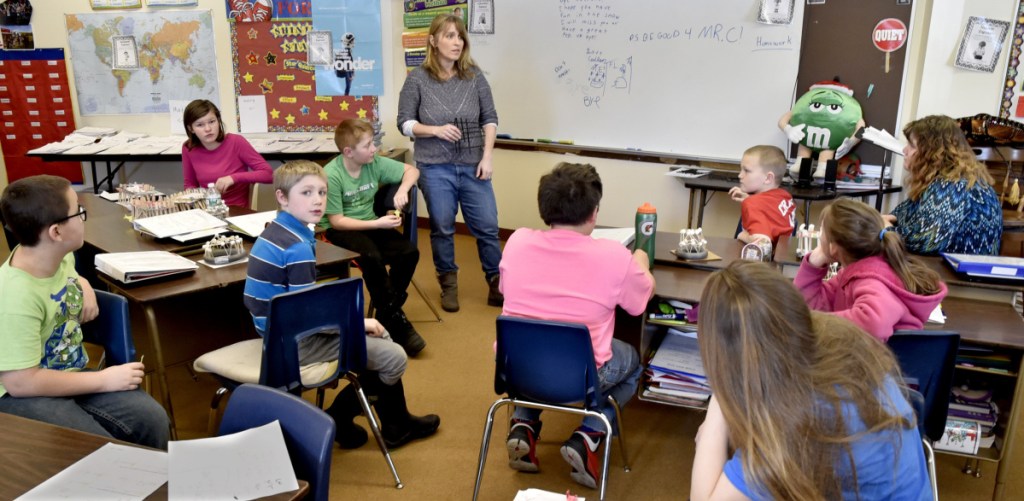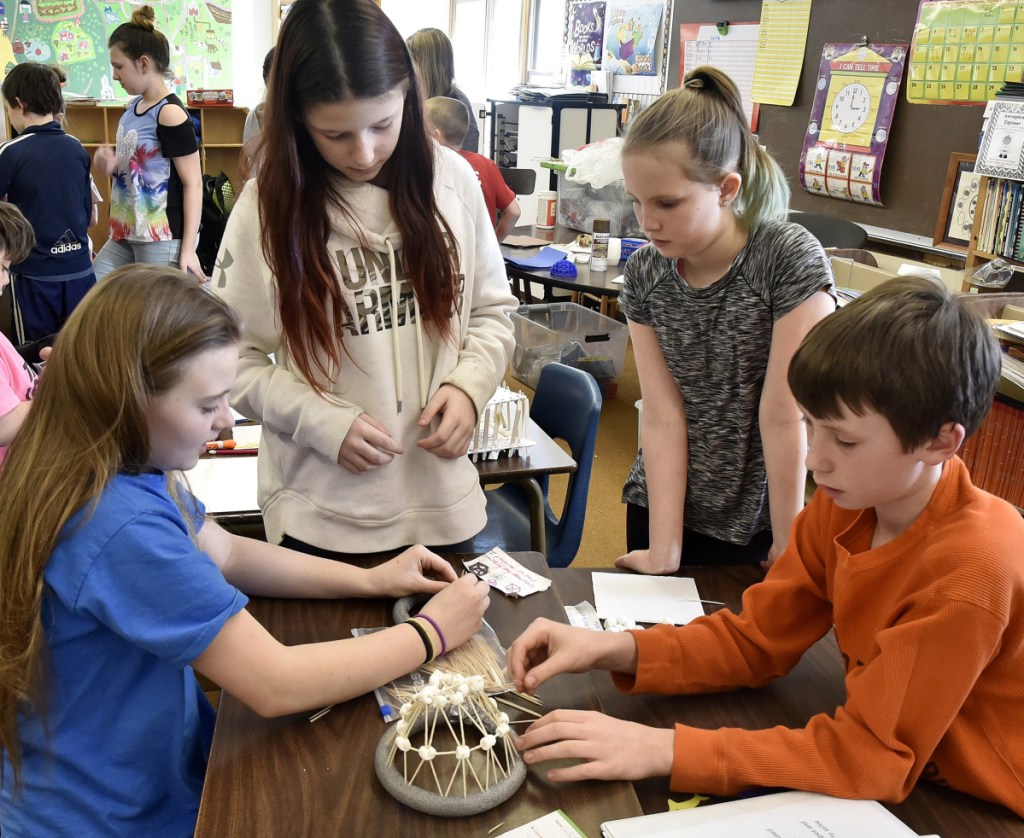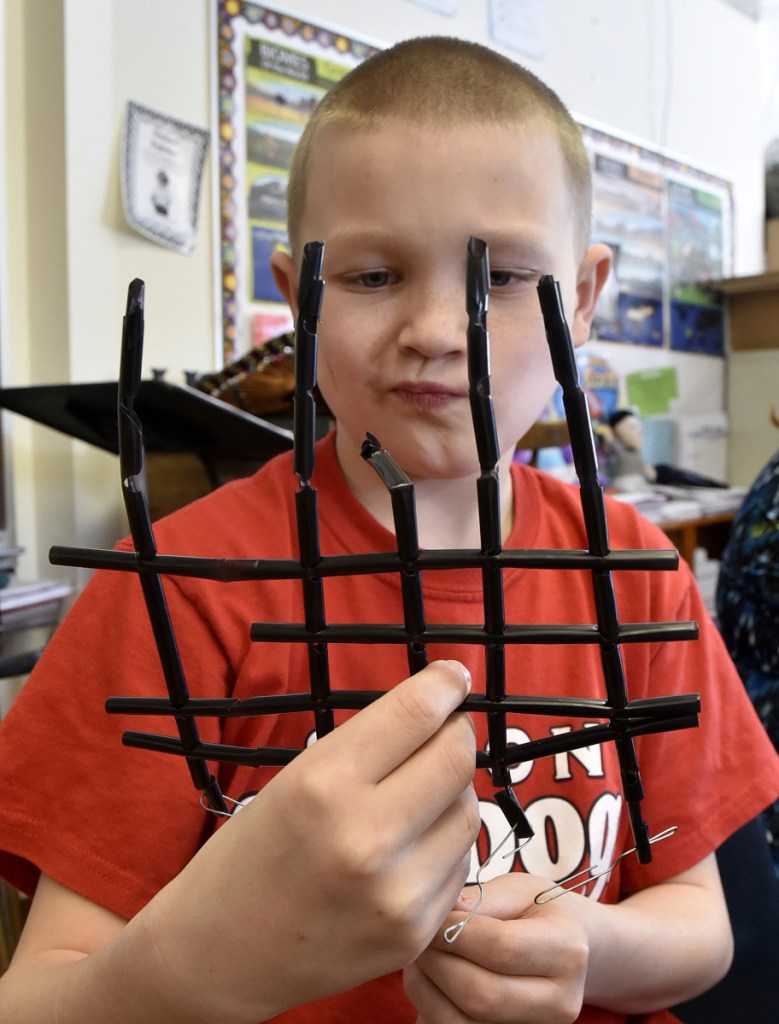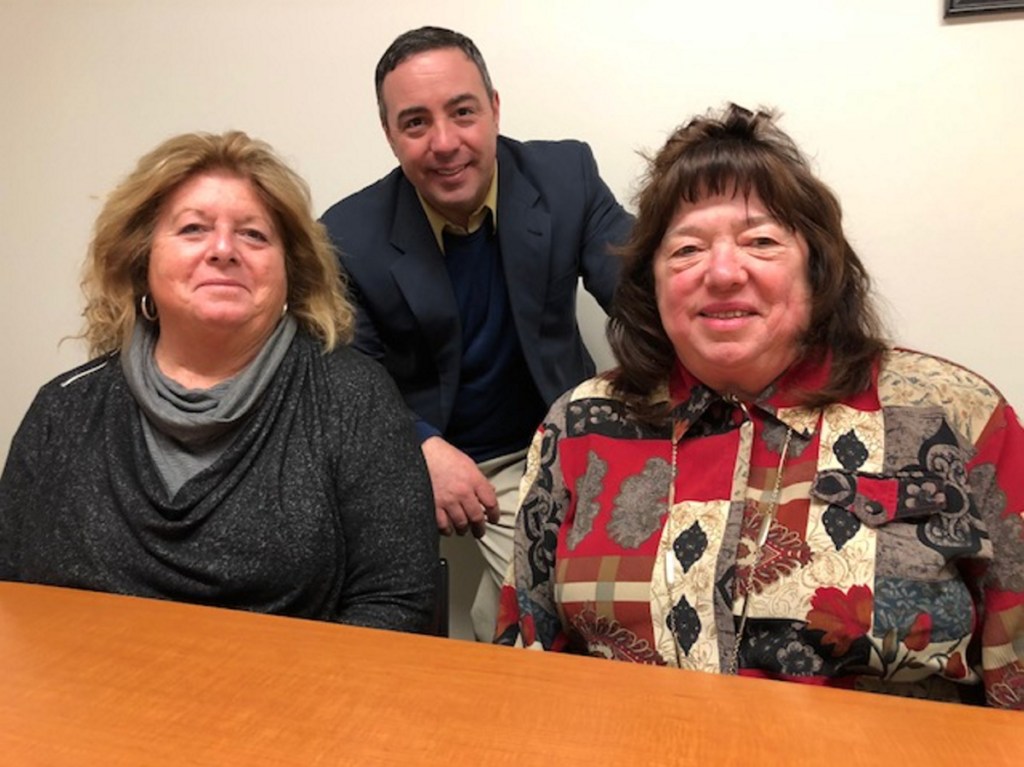Superintendents in three Somerset County school districts are collaborating on two new projects, fueled with almost $700,000 in Maine Department of Education grant money.
Michael Tracy, at Anson-based Regional School Unit 74, along with Bonnie Levesque, at School Administrative District 59 in Madison, and Virginia Rebar, at SAD 13/RSU 83 in Bingham and Moscow, are using $337,500 to insert an “A” for arts into the ongoing STEM initiative — Science, Technology, Engineering and Math — to create STEAM.
They also are creating an alternative education program for at-risk middle school students in all three districts with a separate grant, hoping to catch students before they lose them.
“The STEAM is an extension of the STEM,” Rebar said Friday morning in a joint conference with Tracy and Levesque in North Anson, noting that the arts have been added to the original STEM program in the three districts, financed by an earlier $235,000 state Department of Education grant cycle.
The two new grants come with the state’s regionalization initiative and are part of 11 new EMBRACE programs — Enabling Maine students to Benefit from Regional and Coordinated approaches to Education.
The second grant brings $335,000 to the three districts for a joint alternative education program for middle-school-age students to be located at Madison Junior High School, with bus transportation provided through programs already in place with the Somerset Career and Technical Center at Skowhegan Area High School.
Tracy said the three districts already have been collaborating on a number of projects, including the hiring of Kathy Bertini as the STEM coach, as well as transportation, food service, high school course offerings, a physical therapist and some sports teams.
“Each grant has a fiscal agent,” Levesque said. “Madison is the fiscal agent for the alternative ed grant and Carrabec is the fiscal agent for the STEAM grant — they handle the bookkeeping. We bill and they pay as we go.”
The “string” that might be attached is the challenge of continuing to collaborate on the projects once the state money dries up, the group said.
“I think that the individual district couldn’t keep it going forever, but if we can continue to collaborate, we can do it,” Rebar said. “We have had experience working together on the first grant — the STEM grant.”
Rebar said Bertini, the STEM coach, has spent 12 weeks in her district, now is spending 12 weeks in the Carrabec district and will end up spending 12 weeks in Madison.
The original STEM grant, implemented this past summer and fall, resulted in projects in which students are presented with a problem, they engineer a solution and “it’s OK to fail, because you learn from that,” Rebar said.
One of the STEM projects has students building a mechanical hand out of straws. The straw hand is later moved to a 3-D printer, where a prosthetic hand is built from the 3-D model. Students in fifth and eighth grades this year also made boats, bridges and beaver dams using their own homemade domes, which were tested for strength by stacking 23 school text books on top until the structure gave way.
STEAM will add the arts to it through graphic design, art and music — making musical instruments while they make rhythms and sounds.
“It’s very highly engaging,” Tracy said. “It’s problem solving. It’s project based. It’s getting the kids to work together — team work. It’s all those best practices in education.”
Rebar said the STEM projects “caught on like fire. Kids went home talking about it and were waiting at the door for the STEM teacher arrival.”
Now, the three superintendents said, adding the arts and design to the mix, student inspiration is sure to increase.
A STEAM laboratory will be established in each school district with the equipment needed for a hands-on experience, they said. Funding also will be used for field trips to see actual scientists, artists and engineers at work.
Rebar said the STEAM program grant is a financial incentive to get school districts to work together to offer more opportunities for students and not have to go it alone.
There also have been conversations among town officials and school boards about more regionalized efforts, but Tracy said each district seems to want to keep its identity and its high school.
Levesque said that while the alternative middle school will be located in her building in Madison, all three superintendents will continue to collaborate in the decision-making process. She said the target group for the program will be seventh-, eighth- and ninth-graders, but will be expanded by age — from 11 to 14 — to reach as many students as possible who need the attention.
The nickname for the alternative middle school is WITS — Whatever It Takes School.
“We have these kids who can have the potential of falling through the cracks,” Tracy said. “We want to capture those kids in their interest in education before we lose them at the high school. It’s where technology and computers meet home economics, auto mechanics if they’re interested and (industrial arts) outdoor education and meets career and technical education.
“It’s back to the future to meet the future.”
The alternative education middle school is expected to be up and running by the start of school next fall.
Doug Harlow — 612-2367
Twitter:@Doug_Harlow
Send questions/comments to the editors.







Comments are no longer available on this story